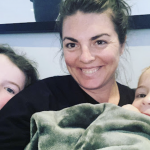Pauline Hanson Wants To “Get Rid of” Autistic Kids From Mainstream Classrooms
Pauline Hanson Wants To “Get Rid of” Autistic Kids From Mainstream Classrooms
Senator Pauline Hanson has announced that her party, One Nation, will support the Federal Government’s $18.6 billion school funding package. But with that support comes a personal opinion that autistic children should be segregated from other children in the classroom.
She actually used the phrase “get rid of these people” when describing autistic children in mainstream classes.
“These kids have a right to an education by all means, but if there’s a number of them these children should actually go into a special classroom, looked after and given that special attention,” she said in the Senate this morning.
“Most of the time the teacher spends so much time on them they forget about the child who wants to go ahead in leaps and bounds in their education, but are held back by those.
“It’s no good saying we have to allow these kids to feel good about themselves and we don’t want to upset them and make them feel hurt.
“We have to be realistic at times and consider the impact that is having on other children in the classroom.
“We need to get rid of those people because you want everyone to feel good about themselves.
“I hope this will improve our educational standards if it is addressed in the classroom,” Senator Hanson said.
Ms Hanson has claimed that many parents and teachers have come to her, raising the issue of “children with disabilities or autism in mainstream classrooms”.
Look, I understand where she’s coming from, and I agree that a great deal of this funding should be used to help children with special needs but this is not the answer. And her language is poorly considered, offensive and confrontational at best.
Forget segregation, these “children with disabilities or autism” as Hanson so crudely put it, should be treated just like every other child in the classroom, only with extra support for their special needs. These children still need to learn all of the same lessons their peers do, as well as how to resolve conflict and how to negotiate their feelings and emotions as they grow and mature, just like every other child in the school.
How will they grow into confident, capable adults if they are the ones being held back? And who gets to decide which children have to be segregated? It’s not called a spectrum for nothing.
Perth mum, Amanda Dixon agrees. “My daughter was fortunate to go to a school which included a ‘special needs’ school within it,” she said.
“It was awesome for inclusion and also absolutely brilliant for the mainstream students who thought no differently of kids that were different. School assemblies were loud and restless and fully inclusive of all students.”
Ms Dixon wholeheartedly objects to Pauline Hanson’s opinion, claiming that the senator does not know what she’s talking about. She worries about the future for special needs children in mainstream schools, including her own daughter.
“I’m just so unsure how we’re ever going to become ‘inclusive as the norm’ when we have people like Ms Hanson in a position of power and people that actually listen to what she has to say.
“This is not 1980 where there was a very obvious separation between kids who could and kids who couldn’t.”

Having special needs doesn’t mean they must be separated from their peers. Granted, it may help the classroom move a little more quickly through the curriculum, but what is it teaching them about people who are different from themselves? That they are to be banished for looking at the world a little differently? Screw that. I don’t want my children to learn that.
Use some of that funding to add additional, more advanced classes for those that “want to go leaps and bounds in their education” and are “feeling held back”. Is that so hard?
No, it’s not. It’s not so hard at all.
And it’s certainly a much kinder and more inclusive solution. Is that not what we are all constantly teaching our children? To be kind and to include everyone?
Not hard, Ms Hanson.













